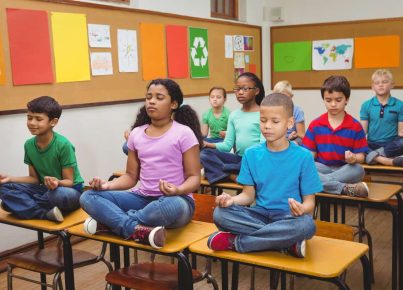Introduction:
A strong classroom community is essential for creating a positive learning environment. When students feel comfortable and supported in their classroom, they are more likely to engage with the material and contribute to a collaborative atmosphere. To that end, here are 10 quick and easy ways to develop a strong classroom community.
1. Set clear expectations:
Begin the school year by establishing clear expectations for behavior and participation. This will ensure that all students understand their responsibilities, which is critical in creating a cohesive classroom community.
2. Encourage open communication:
Make it clear that every student’s thoughts and opinions are valued by fostering an environment of open communication. Encourage students to express themselves without fear of judgment, both in class discussions and one-on-one conversations.
3. Create opportunities for collaboration:
Design lessons and activities that require students to work together, such as group projects or cooperative learning strategies. These experiences allow students to learn from one another and strengthen their interpersonal relationships.
4. Be approachable:
As the teacher, it’s important to be accessible and approachable for your students. Make yourself available during breaks or after class to chat with students about their concerns or interests, reinforcing the idea that their opinions matter.
5. Praise effort, not just results:
Recognize and celebrate all achievements in the classroom community – big or small – in order to create an atmosphere of encouragement and support. Applaud hard work, persistence, or helpful behavior just as much as high test scores or perfect projects.
6. Organize team-building activities:
Arrange occasional team-building exercises outside of regular lessons to promote bonding among classmates. Games, interactive icebreakers, or group discussions can help break down barriers between students and create lasting connections.
7. Foster empathy and understanding:
Encourage students to think about their peers’ feelings when making choices, whether it’s speaking up in class or offering support when someone is struggling. Develop activities that prompt students to understand and appreciate one another’s perspectives.
8. Prioritize inclusivity:
Ensure that every student feels seen and heard by addressing issues of diversity, intersectionality, and individual needs. Encourage students to embrace their unique backgrounds, beliefs, and identities while celebrating the diversity in their classroom community.
9. Provide a safe space for failure:
In order for students to learn from mistakes without fear of embarrassment, create an environment where it’s okay to take risks and occasionally fail. Emphasize the importance of trying new things and remind students that nobody is perfect.
10. Maintain consistency:
To build trust within your classroom community, be consistent in upholding your expectations, routines, and consequences. Follow through on commitments you make, and ensure that all students know they can depend on you to be fair and reliable.
Conclusion:
Developing a strong classroom community takes time and effort from both teachers and students, but the benefits are worth the investment. When everyone feels valued, respected, and supported, a positive learning environment can truly flourish. By implementing these 10 quick and easy strategies, you can facilitate the growth of a thriving classroom community where mutual trust and respect reign supreme.




